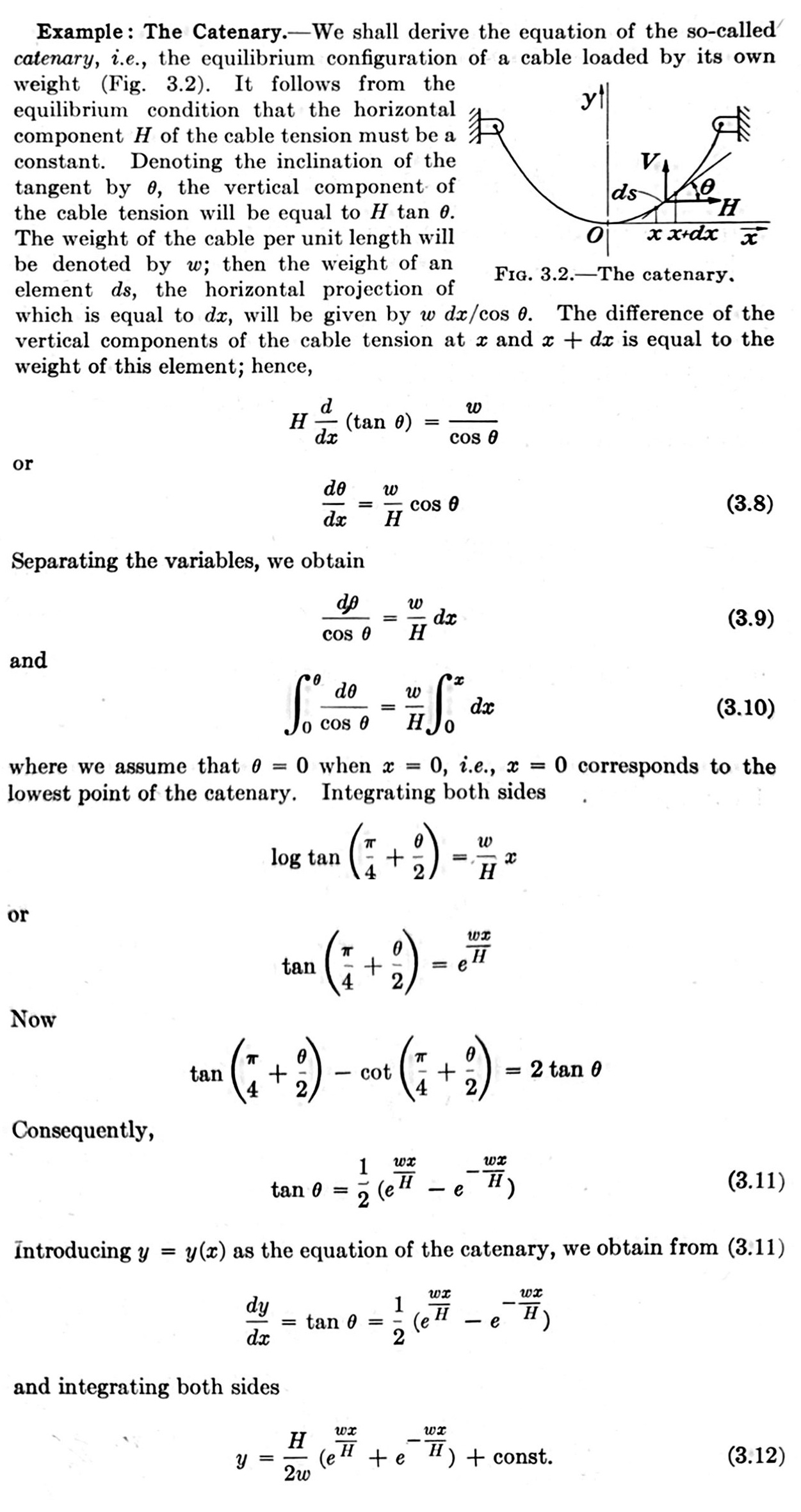Odd analysis in an old book
July 29, 2025 at 11:28 PM by Dr. Drang
In retirement, I’ve taken to going through old engineering textbooks to fill in holes that weren’t covered in my classes. These aren’t necessarily the assigned texts, but they’re books I heard about. Recently, I’ve started on Mathematical Methods in Engineering by Theodore von Kármán and Maurice Biot, published in 1940.
Early in the book, in a section about using separation of variables to solve ordinary differential equations, the authors derive the equation for a catenary in a way that seems a little odd to me. Here it is, where I’ve put together into a single image an analysis that’s spread over two pages in the book:

The first thing you may have noticed is that the last two equations,
and
don’t simplify their form by using hyperbolic trig functions. Most authors write these as
and
I don’t understand why they went to the trouble of manipulating the integral into the difference of two exponentials if they weren’t going to then use the definition
It’s not wrong, just odd.
Even stranger, I thought, was the expression for
I’m not complaining about how they should have used a dummy variable instead of inside the integral (although they should have). No, what’s strange is the expression they used for the answer:
where I’m making it explicit that the logarithm is the natural log. Not only does the introduction of the term seem to complicate the expression unnecessarily, it leads to the use of this bizarre trig identity,
to get the integral in the form they want.
Now it’s true that I haven’t memorized a lot of trig identities, but that’s one I’m sure I’ve never even seen before. And the thing is, there’s a simpler expression for the antiderivative of :
How is this simpler? Well, it’s obvious that
so it’s fairly easy to show that
as long as you remember that
Therefore,
which is where the authors want to go to get to Equation 3.11.
I now feel an obligation to look into books of similar or earlier vintage to see if von Kármán and Biot’s derivation technique was common back then.
